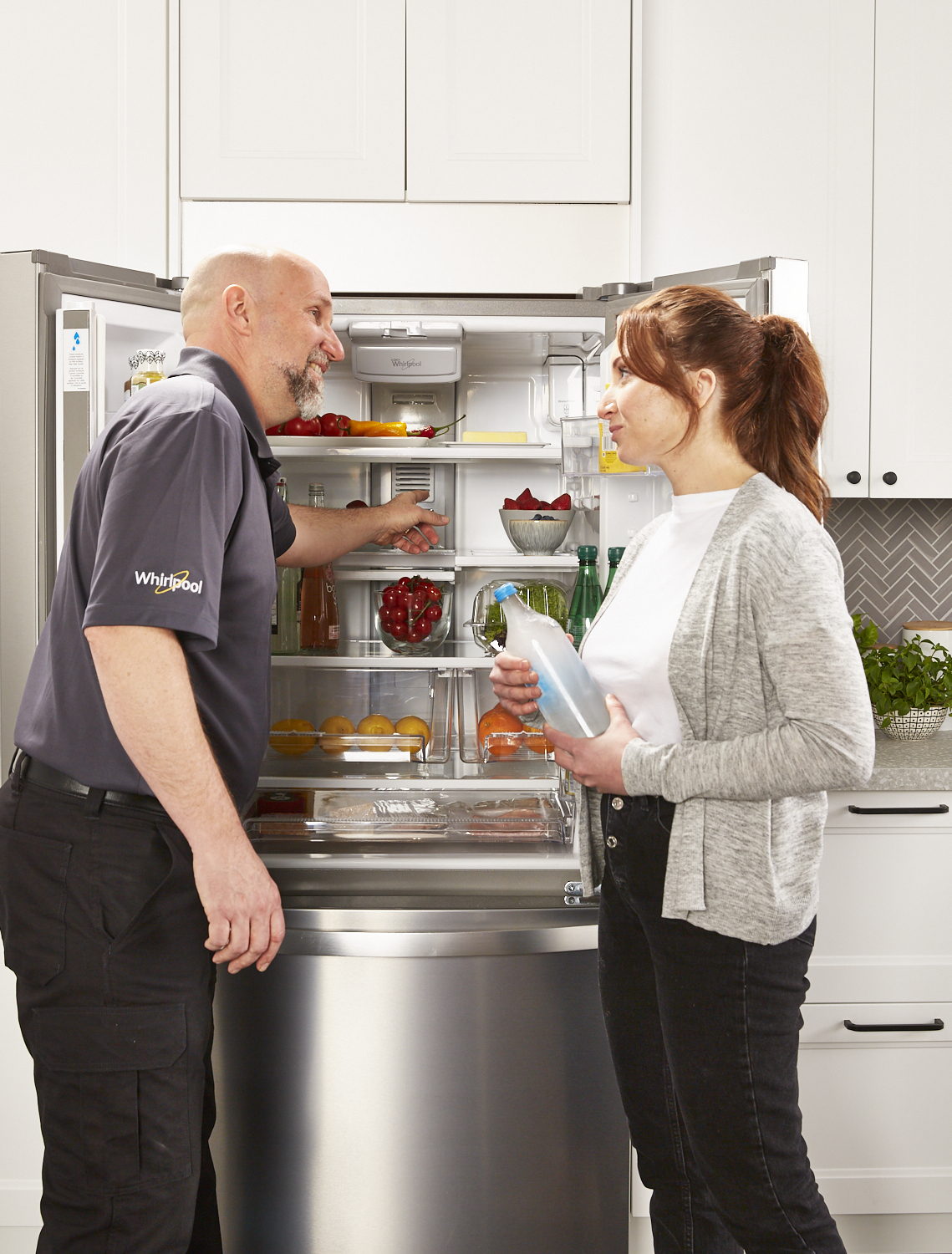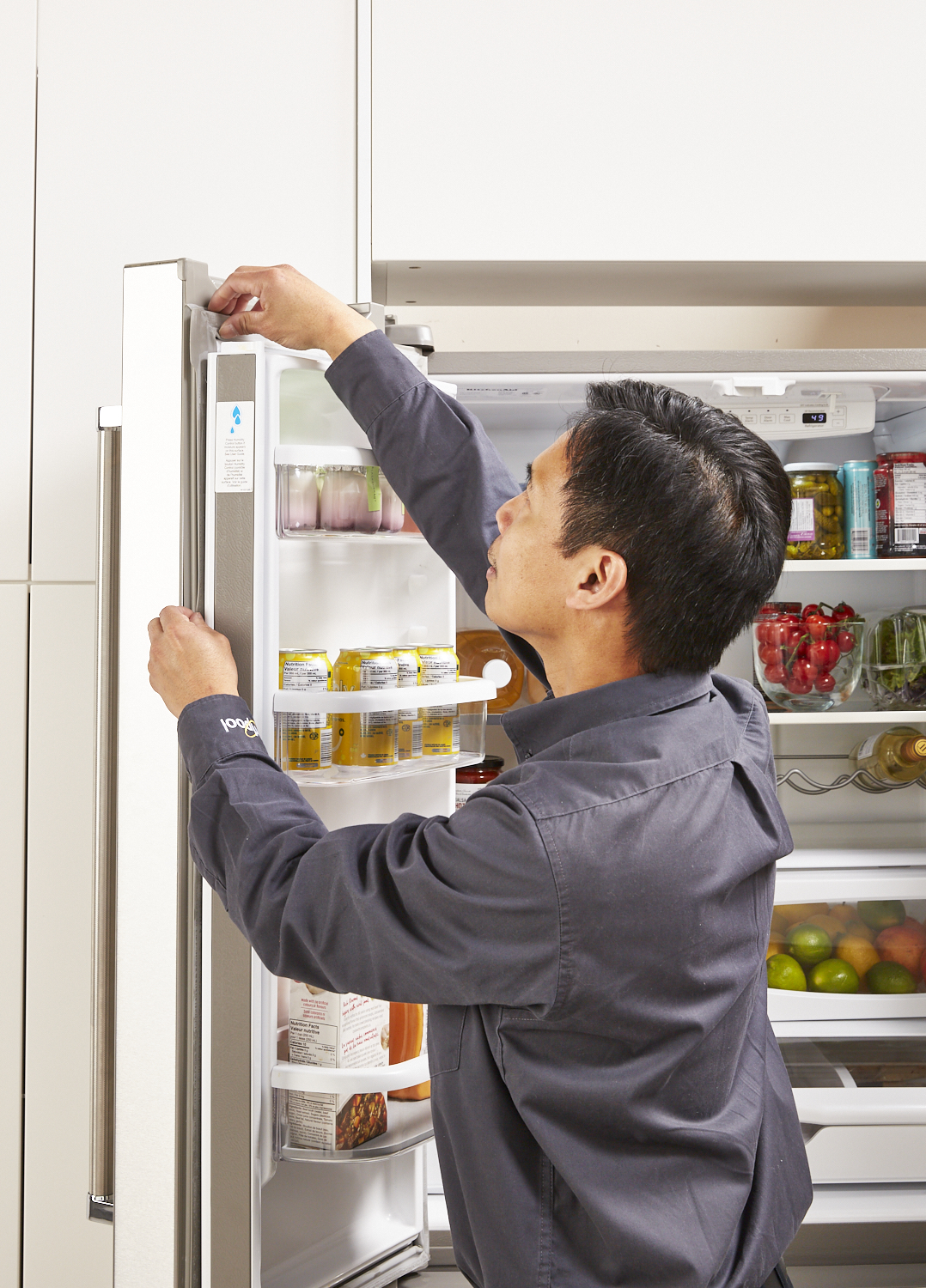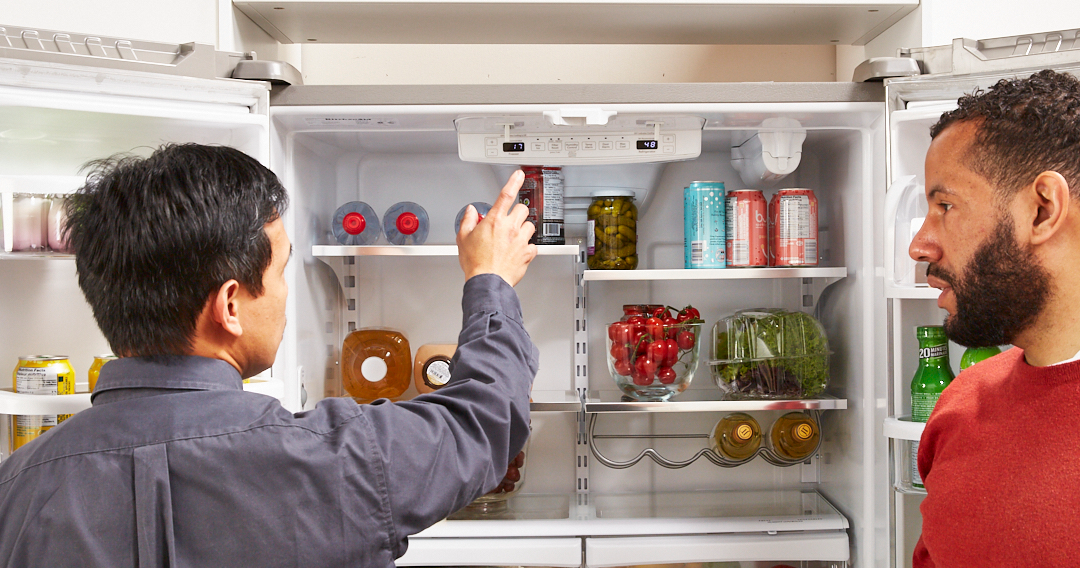There are several reasons why food might be freezing in your refrigerator. It could be that your refrigerator’s vents are blocked or the door seal might be leaky or loose. The good news is this problem is one that many people can fix on their own. Let’s look at why this problem might be happening and how you can troubleshoot it.
Why Is Food Freezing in My Fridge?
The typical fridge is engineered to keep food at its ideal temperature, giving them a chance to stay fresh for as long as possible.
The most common reasons behind food freezing in your refrigerator include:
- Temperature setting
- Blocked air vents
- Ice maker settings
- Defective thermistor
- Leaky door seals
- Dirty coils

Troubleshooting:
Temperature Setting
Frozen food can be the result of your fridge’s temperature setting being too low. For storing fresh food, the ideal temperature is between 36 and 38 degrees Fahrenheit or below 40 degrees.
To fix this, you can try resetting your fridge’s temperature. First, locate the temperature controls and then adjust it to the preferred temperature. You can most likely find your fridge’s ideal temperature in the user guide or owner’s manual.
If your fridge is set to the correct temperature, there might be something off with your temperature sensor. You can test this by doing the following:
- Put a glass of water on your fridge’s top shelf and leave it for 24 hours.
- Take the glass of water out and test the water temperature using a cooking thermometer. If the temperature is not within two degrees of the ideal temperature range, your temperature sensor may need to be replaced.
Blocked Air Vents
Air vents are critical to circulate air to create a consistent temperature that helps keep food cold. Remember, proper airflow requires room between the fridge and freezer compartments.
If anything is blocking your fridge’s air vents, more cold air might remain in the fridge and freeze the food over time. You can attempt to fix this by rearranging the items in your fridge. Try to ensure that nothing is touching or blocking the air vents.
Ice Maker Settings
An ice maker that’s activated but disconnected from the water supply can cause freezing in the fridge as it unsuccessfully tries to make ice.
You can try adjusting the settings on your ice maker to see if this rectifies the problem. As long as you don’t plan on making ice, you can even turn it off. There is usually a power switch near the ice maker. You may have to lift the metal feeler arm into the off position.
If your fridge has a touchscreen menu, you may be able to use it to turn off the ice maker.
Defective Thermistor
A thermistor monitors the air temperature in a fridge. It also helps regulate the power of the compressor and evaporator fan.
A defective thermistor could cause issues with the compressor and evaporator fan, resulting in the fridge becoming too cold.
You can use a multimeter to confirm if the thermistor may be defective. Also, the thermistor resistance should change relative to the fridge’s temperature, so if it doesn’t or the multimeter reading shows no continuity, you may have to consider replacing the thermistor.
Leaky Door Seals
Gaskets seal the fridge to prevent cool air from escaping and heat from entering.
If the gasket is leaking, the fridge will counteract this by running without interruption, and the food inside the fridge may freeze as a result.
Dirty Coils
Most fridges have evaporator coils and their job is to make the fridge compartment cold.
If these coils are dirty or caked in dust, the fridge has to work harder to maintain the ideal temperature and, in the process, freeze its contents.
These five steps can help you clean your fridge’s evaporator coils:
- Turn off your fridge by flipping the switch to the off position on your circuit breaker.
- Remove the fridge’s front panel.
- With an angled vacuum hose, carefully vacuum the coils.
- Return the front panel back to its proper place.
- Turn on the fridge.

Get Help From the Pros
If you need help diagnosing or repairing an issue with your refrigerator, you should book a service appointment with Appliance Pros+ today.





